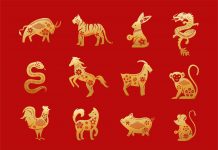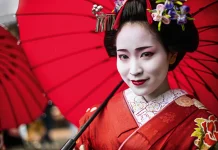With the passage into the 20th century, modern art takes off. Picasso, Matisse, Kandinsky, Malevich, the Delaunays and all the others constitute an abundant avant-garde which is divided into numerous artistic movements during the first half of the century. Experiments are multiplying thanks to painters who always venture further into the unknown.
Art has evolved since the origin of mankind. Artists are constantly coming up with new artistic styles. An art movement is a trend or style in art with a specific common philosophy or goal, followed by a group of artists over a period of time (usually a few months, years, or decades). Artistic movements were particularly important in modern art, when each consecutive movement was seen as a new avant-garde style like for example the recent concept Pencil Vs Camera. There is no rule when regrouping artistic movements.
This article discusses major Western art movements, art styles and art concepts and their influence on the world today.
The Most Famous Artistic Movements

An artistic movement or artistic current is a set of artists and artistic works having a common aesthetic. Art historians generally use the notion of movement when the group associated with it lays claim to a body of theory. It is often complicated to draw a complete portrait of the different currents in the history of painting. Indeed, the fact of drawing, painting or even making simple sketches pushes us to go back to the beginnings of our existence. It is therefore unpretentious that we draw up here this list of the main styles that you can discover – or rediscover – and to feed your curiosity!
Prehistoric Art (- 40,000 BC – 4,000 BC)

The origins of art history can be traced back tens of thousands of years to the prehistoric era, long before written records were preserved. The earliest artefacts come from the Paleolithic era, or the Stone Age, in the form of rock carvings, engravings, pictorial images, sculptures, and stone arrangements. The art of this period relied on the use of natural pigments and stone carvings to create representations of objects, animals and rituals that governed the existence of a civilization. One of the most famous examples is that of the Paleolithic cave paintings found in the complex caves of Lascaux in France which are 20,000 years old.
Ancient Art (- 4000 BC – 400 AD)

Ancient art was produced by advanced civilizations, which in this case refer to those with an established written language. These civilizations included Mesopotamia, Egypt, Greece, and those of the Americas.
Most of the artwork from this period has similar purposes: telling stories, decorating utilitarian objects like bowls and weapons, displaying religious and symbolic images, and demonstrating social status. Many works depict stories of rulers, gods and goddesses.
Artists of the caliber of Picasso, Giacometti, Modigliani, Rodin or Matisse, who completely revolutionized the artistic panorama of their time, were deeply inspired by ancient art. Picasso had studied ancient Greek and Roman art during his visits to the Louvre during his student years. Visual references to Antiquity began to appear in his works from 1917, also known as Picasso’s “classical period”. Sculptural nudes, classical compositions, but also an interest in subjects drawn from mythology prevail in Picasso’s works of this period. The Parthenon sculptures also left a deep mark on August Rodin when he first saw them in the British Museum.
Medieval Art (500-1400)

The Middle Ages, often referred to as the “Dark Ages,” marked a period of economic and cultural deterioration after the fall of the Roman Empire in AD 476.
It covers a vast expanse of time and place, over 1000 years of art in Europe, and parts of West Asia and North Africa. It includes the major artistic movements and periods, national and regional art, genres, covers, the crafts of the artists and the artists themselves. A generally accepted scheme includes the later stages of early Christian art, art of the migration period, Byzantine art, Insular Art, Romanesque, Romanesque and Gothic art, as well as many other periods within these central styles. In addition, each region, mainly during the period becoming nations or cultures, had its own distinct artistic style, such as Anglo-Saxon art or Viking art.
Medieval art was produced in many media, and works survive in large numbers in sculpture, illuminated manuscripts, stained glass, metallurgy, and mosaics. Medieval art in Europe was born from the artistic heritage of the Roman Empire and the iconographic traditions of the early Christian Church. These sources have mingled with the vigorous “barbaric” artistic culture of northern Europe to produce a remarkable artistic legacy.
Technically speaking, medieval artists made a lot of mistakes in the way they rendered perspective, tones and colors but this lack of precision allowed the arrival of revolutionary perfectionism of the Renaissance or even more recently amazing detail of the movement of photorealism.
The Renaissance (1400-1600)

The Renaissance style of painting, sculpture and decorative art is characterized by an emphasis on nature and individualism, the thought of man as independent and autonomous. Although these ideals were present at the end of the medieval period, they flourished in the 15th and 16th centuries, alongside economic changes like secularization.
The Renaissance reached its peak in Florence, Italy, thanks in large part to the Medici, a wealthy merchant family who steadfastly supported the arts and humanism, a variety of beliefs and philosophies that emphasize the human. Italian artists like Filippo Brunelleschi or Donatello were key innovators during this period.
Here are some of the techniques that were used in the Renaissance and are still used today by traditional and even digital modern painters.
The use of proportion. The true linear perspective was formalized later, by Filippo Brunelleschi and Leon Battista Alberti. In addition to giving a more realistic presentation of art, this prompted Renaissance painters to compose more paintings.
Another technique was foreshortening. The term foreshortening refers to the artistic effect of shortening the lines of a design in order to create an illusion of perspective.
Sfumato was also a great invention of the Renaissance. The term sfumato was coined by Italian Renaissance artist Leonardo da Vinci and refers to a painting technique of blurring or softening sharp outlines by subtle and gradual blending of one tone into another through the use of l use of fine glazes to give the illusion of depth or three-dimensionality. It comes from the Italian word sfumare which means to evaporate or disappear. The Latin origin is fumare, to smoke.
Finally, the chiaroscuro technique. The term chiaroscuro refers to the modeling effect of painting of using a strong contrast between light and dark to give the illusion of depth or three-dimensionality. It comes from the Italian words meaning light (chiaro) and dark (scuro), a technique that was widely used during the Baroque era.
Mannerism (1527-1580)

The mannerism includes a variety of approaches influenced by the harmonious ideals associated with artists such as Leonardo da Vinci, Raphael and Michelangelo. Where High Renaissance art emphasizes proportion, balance, and ideal beauty, mannerism exaggerates these qualities, often resulting in asymmetrical or unusually elegant compositions. Notable for its artificial qualities (as opposed to naturalists), this art style favors the tension and instability of the composition over the balance and clarity of earlier Renaissance painting. Mannerism in literature and music is notable for its flowery style and intellectual sophistication. The definition of mannerism and its phases continue to be a subject of debate among art historians. For example,
The word Mannerism comes from an Italian word Maniera which means “Manner” or “Style”. But many art historians have different views on the word Mannerism, but many recognize it and still identify it with 16th-century European culture.
The term is also used to refer to some late Gothic painters working in northern Europe between around 1500 and 1530, especially the Antwerp Mannerists, a group unrelated to the Italian movement. Mannerism was also applied by analogy to the Silver Age of Latin literature.
Baroque (1600-1750)

The term baroque, derived from the Portuguese ‘barocco’ which means ‘pearl or irregular stone’, is an artistic and architectural movement developed in Europe from the 17th to the middle of the 18th century. Baroque emphasizes dramatic and exaggerated movement and clear, easy-to-interpret details, which is far from surrealism, to produce drama, tension, exuberance and grandeur.
The Baroque style used contrast, movement, exuberant detail, deep colors, grandeur and surprise to create a sense of awe. The style began at the beginning of the 17th century in Rome, then quickly spread to France, northern Italy, Spain and Portugal, then Austria, southern Germany and Russia. By the 1730s it had evolved into an even more flamboyant style, called rococo or rococo, which appeared in France and central Europe until the mid to late 18th century.
In the decorative arts, the style employs abundant and intricate ornamentation. A general feature is the ornamental elements introduced by the Renaissance. The classical repertoire is cluttered, dense, nested, loaded, in order to provoke shock effects. The new motifs introduced by the Baroque are: trophies and weapons, baskets of fruit or flowers, and others, made in marquetry, stucco, or carved.
Like other artistic periods, Baroque art slowly declined and many other styles of art appeared and replaced it. Even though other artistic styles emerged, Baroque art influenced post-modern art, modern graphic design, and modern interior design. Postmodern art is influenced by Baroque art because it represents the rejection of new modern art. Baroque art offers artists an escape from the dominant artistic movement. Baroque art is very extravagant and powerful, which gives the contemporary artist more freedom to create and imagine figures, ideas and scenes.
Neoclassicism (1750-1850)

Neoclassicism sets up principles incorporated into the styles, theories or philosophies of the different types of art of ancient Greece and Rome, focusing on traditional forms with an emphasis on elegance and symmetry. In the early and mid-18th century, Baroque art gave way to decadent and fanciful Rococo. Later, around 1780, this frivolous style was replaced by the next great revival of classical art, known as Neoclassicism. Defended by the scholar Johann Winckelmann (1717-68), this new style is illustrated by the neoclassical painting of Jacques-Louis David (1748-1825); the photos of his disciple JAD Ingres (1780-1867); the neoclassical sculpture by Antonio Canova (1757-1822); and the architecture of designers like Jacques Soufflot (1713-80).
Romanticism (1780-1850)

Romanticism was an artistic, literary, musical and intellectual movement that originated in Europe towards the end of the 18th century, and in most regions was at its peak in the period from 1800 to 1850. Romanticism was characterized by its emphasis on emotion and individualism as well as the glorification of the past and of nature, preferring the medieval rather than the classical. It was in part a reaction to the Industrial Revolution, to the aristocratic social and political norms of the Enlightenment, and to the scientific rationalization of nature.
Among the characteristic attitudes of Romanticism were the following: a deep appreciation of the beauties of nature; a general exaltation of emotion over reason and of the senses over the intellect; a withdrawal into oneself and an in-depth examination of the human personality, its moods and its psychological potential; a concern for the genius, the hero the exceptional and a concentration on his passions and his inner struggles; a new vision of the artist as a supremely individual creator, whose creative spirit is more important than strict observance of formal rules and traditional procedures. In this movement, the focus is on the imagination as a gateway to transcendent experiences and spiritual truth; an obsessive interest in popular culture, national and ethnic cultural origins, and the medieval era; and finally a predilection for the exotic, the distant, the mysterious, the strange, the occult, the monstrous and even the satanic.
The individual was valued, but we also felt that people had an obligation to their peers: personal commitment to the group was therefore important.
Today, romanticism can be found in a wide range of films, television, literature, music, and art. Whether it’s an emphasis on the eternal power of nature or a visceral audience reaction to a work, contemporary society is full of romanticism. Our cultural focus on individualism, freedom and the desire to protect nature as well as fantasies about historical periods come from romanticism!
Romanticism has influenced recent political ideologies, inviting for example to engage in the cause of the poor and the oppressed and with ideals of social emancipation and progress.
Realism (1848-1900)

Realism is a genre of art that began in France after the French Revolution of 1848. Clearly rejecting Romanticism, the dominant style that preceded it, Realist painters focused on scenes of contemporary people and life daily. What may seem normal now was revolutionary after centuries of painting depicting exotic scenes from mythology and the Bible, or creating portraits of nobility and clergy. Realism is the result of multiple events: the anti-romantic movement in Germany, the rise of journalism and the advent of photography. One of the most influential leaders of the realist movement is Gustave Courbet, a French artist committed to painting only what he could physically see.
Impressionism (1865-1895)

Impressionism was a radical art movement that began in the late 1800s, centered primarily around Parisian painters. The Impressionists rebelled against classical subjects and embraced modernity, eager to create works that reflected the world in which they lived. Uniting them was a focus on how light could define a moment in time, with color providing definition instead of black lines. The Impressionists emphasized the practice of painting outdoors, or painting outdoors. Initially derided by critics, Impressionism has since been adopted as one of the most popular and influential art styles in Western history.
Impressionism was considered the very first form of modern painting. It started in France as a formal art which then spread to other parts of the world. It relies on the presence of light and brushstrokes to show the nature of a subject. Obvious between the 1860s and 1870s. It was associated with fast, suspended sketching sensations. The Impressionists could focus their works on the modern world. They depended on what had happened rather than historical or religious issues. A French artist named Claude Monet made Impressionism popular.
He was particularly interested in the passage of time in his representation of light. His series of paintings capturing Rouen Cathedral at different times of the year and day offer clear examples of his ideas on how a subject can be transformed by the properties around it. His most famous painting in this series is Rouen Cathedral from 1894: The facade at sunset. Monet extended his Impressionist practice throughout his life, culminating in his multiple studies of the water lily pond, carried out from 1898 to 1926, of which the last works in the series (made just before his death) reach an almost abstract quality.
Post-Impressionism was more of a reaction against Impressionism, which he found too suffocating. Post-Impressionists chose to portray not only what was tangible, taking a more symbolic and emotional approach to their subject matter, especially in the use of color, which was not necessary to express realism. In post-impressionism, works of art placed more emphasis on colors and less on light.
Pointillism (1880-1891)

Also known as “dot art”, Pointillism is a painting technique developed by French artists Georges Seurat and Paul Signac. The duo moved away from their Impressionist friends to transform their small brushstrokes and strokes into distinct dots of color which, when applied en masse, form cohesive, detailed, and dimensional images (much like our modern pixels, If you want).
Pointillism involved the application of paint in carefully placed dots of pure, unmixed color. According to Seurat and Signac, these would be mixed by the eye of the beholder to create a more striking image than a work whose colors have been mixed in a conventional manner on a palette.
Vincent van Gogh, who knew Seurat and Signac during his stay in Paris from 1886 to 1888, had a brief association with pointillism. Certainly, some of his paintings from this Parisian period – such as the Self-portrait of 1887 – show traces of this influence. (After a visit to Seurat’s studio one day, he claimed to have experienced a “color revelation.”) It is generally believed, however, that van Gogh was too restless a mind for a style as technical as pointillism.
Pointillism had a big impact on later art movements which also gave their names according to the forms used in the art movement such as Cubism or Digital Circlism.
Symbolism (1880-1910)

Symbolism was a late 19th century artistic movement of French, Russian and Belgian origin finding its birth in poetry and other arts seeking to symbolically represent absolute truths through metaphorical images and language primarily in reaction against naturalism and realism. In literature, the style originated with the publication in 1857 of Les Fleurs du Mal by Charles Baudelaire. The works of Edgar Allan Poe, whom Baudelaire greatly admired and translated into French, were a significant influence. The aesthetic was developed by Stéphane Mallarmé and Paul Verlaine during the 1860s and 1870s. In the 1880s, the aesthetic revolved around a series of manifestos and attracted a generation of writers.
As an art form in culture and a means of conveying philosophical statements, symbolism has had a great influence in culture. There are literally thousands of conscious and unconscious symbols used by everyone every day; our knowledge of these symbols and their origins is limited only by our desire to understand where they came from. For example, many symbols used in the United States government are derived from Masonic symbolism. The pyramid and the all-seeing eye on paper money is a good example; nowhere in the mythology of the United States is there a pyramid, nor an eye other than that of God. In fact, the pyramid is believed to symbolize power and strength, as designer Charles Thomson explicitly stated.
Finally, a good example of symbolism in the modern world is the ubiquity of trademarks, badges that instantly identify people, places and things. Since the badge is intended to fully represent its owner – the “Golden Arches” means MacDonald’s, the “Swoosh” means Nike – we are trained to recognize all aspects of the owner in the identifying mark.
Art Nouveau (1890-1910)

It is an international style of art, architecture and applied art, in particular the decorative arts, known in different languages by different names: Jugendstil in German, Stile Liberty in Italian, Català Modernism in Catalan, etc. In English it is also known as Modern Style. The style was most popular between 1890 and 1910. It was a reaction against academic art, eclecticism and historicism. 19th century architecture and decoration. It is often inspired by natural shapes such as the sinuous curves of plants and flowers. Other hallmarks of Art Nouveau were a sense of dynamism and movement, often imparted by asymmetry or whiplash lines, and use of modern materials, especially iron, glass, ceramics and later concrete, to create unusual shapes and larger open spaces lash lines and the use of modern materials, especially iron, glass, ceramics and later concrete, to create unusual shapes and larger open spaces. One of the major goals of Art Nouveau was to break the traditional distinction between the fine arts (especially painting and sculpture) and the applied arts. It has been most widely used in interior design, graphic arts, furniture, glass art, textiles, ceramics, jewelry, and metalworking.
From Belgium and France it spread to the rest of Europe, taking on different names and characteristics in each country, and it had a notable influence on all subsequent artistic movements.
Fauvism (1905-1910)

It was the first project of its kind to succeed and thrive in the 20th century. Henry Matisse, who designed the project, added some emotion to his paintings. He added brush strokes and vivid colors to his works which became more appealing to the audience. The Fauves’ paintings were characterized by seemingly savage brushwork and strident colors, while their subject matter exhibited a high degree of simplification and abstraction. Fauvism can be classified as an extreme development of the style of Van Gogh, somewhat of Postimpressionism merged with the Pointillism of Seurat and others. Neo-impressionist painters, in particular Paul Signac. Other key influences were Paul Cézanne and Paul Gauguin, whose use of saturated areas of color, especially in paintings from Tahiti, strongly influenced Derain’s work at Collioure in 1905. Fauvism is still present today in through the works of artists who do not follow any academic rule.
Expressionism (1905-1925)

Expressionism is seen more as an international trend than a coherent artistic movement, particularly influential at the start of the twentieth century. It covered various fields: art, literature, music, theater and architecture. Expressionist artists sought to express emotional experience rather than physical reality. Famous expressionist paintings are The Scream by Edvard Munch, Der Blaue Reiter by Wassily Kandinsky and The Seated Woman with Raised Legs by Egon Schiele. Expressionism is a complex and broad term that has meant different things at different times.
People, places and things are distorted or exaggerated. Even nature is sometimes distorted. The scenes show a hostile and alienating modern world. The ominous feel is amplified by aggressive, rough brush strokes.
German Expressionism was one of the many creative movements in Germany before World War I, influencing architecture, painting, printing, and cinema. Expressionist films often used wildly unrealistic and geometrically absurd sets with patterns painted on walls and floors to represent lights and shadows. The plots of these films often dealt with madness, madness and betrayal as well as other subjects considered intellectual (as opposed to non-intellectual subjects of action and romance). The influence of German expressionism is also found in American cinema. Many German directors fled to America to escape the Nazis during WWII and found their way to Hollywood. Here, the horror and film noir genres received the greatest impact.
In modern film culture, German expressionism is clearly visible in the work of writer / director Tim Burton, known for his crazy, eccentric and bizarre films. Batman Returns is also cited as a modern attempt to capture the essence of German expressionism. You can see it for yourself by clicking here. As you watch, pay close attention to the use of light, but also keep an eye out for some totally unrealistic costumes and sets! German expressionism is also seen in Burton’s 1990 film Edward Scissorhands, where Johnny Depp’s character looks like Dr. Caligari’s long-lost twin of Cesare. In his 1993 animated feature The Nightmare Before Christmas.
Cubism (1908-1920)

Cubism is an early 20th century avant-garde artistic movement that revolutionized European painting and sculpture and inspired related movements in music, literature, and architecture. In cubist art, objects are analyzed, broken down and reassembled in an abstract form, instead of representing the objects from a single point of view, the artist portrays the subject from a multitude of points of view. vue to represent the topic in a larger context. Cubism is quite simply considered the most influential art movement of the 20th century.
In France, ramifications of cubism developed, notably Orphism, abstract art and later purism. The impact of Cubism was far-reaching and far-reaching. In France and other countries, Futurism, Suprematism, Dadaism, Constructivism, Vorticism, De Stijl and Art Deco developed in response to Cubism. The first Futurist paintings have in common with Cubism the fusion of past and present, the representation of different views of the subject photographed at the same time, also called multiple perspective, simultaneity or multiplicity, while constructivism was influenced by the technique of construction of the Picasso sculpture from separate elements.
Other commonalities between these disparate movements include the faceting or simplification of geometric shapes and the association of mechanization and modern life. The influence of cubism spread to other artistic fields, apart from painting and sculpture. In literature, the written works of Gertrude Stein employ repetitions and repetitive phrases as building blocks in both passages and entire chapters. Most of Stein’s important works use this technique, including the novel The Making of Americans (1906-1908). Not only were they the first major patrons of Cubism, but Gertrude Stein and her brother Leo also had a major influence on Cubism. Picasso in turn had an important influence on Stein’s writing.
In the realm of American fiction, William Faulkner’s 1930 novel As I Lay Dying can be read as an interaction with the Cubist fashion. The novel presents accounts of the various experiences of 15 characters who, taken together, produce a single cohesive body. The poets generally associated with cubism are Guillaume Apollinaire, Blaise Cendrars, Jean Cocteau, Max Jacob, André Salmon and Pierre Reverdy. As the American poet Kenneth Rexroth explains, Cubism in poetry “is the conscious and deliberate dissociation and recombination of elements into a new artistic entity empowered by its rigorous architecture.
Constructivism (1914-1930)

Developed by the Russian avant-garde around 1914, Constructivism is a branch of abstract art, rejecting the idea of ”art for the sake of art” in favor of art as an end-oriented practice. social. The work of the movement was mostly geometric and composed with precision, sometimes using mathematics and measuring tools.
Futurism (1909-1918)

It was a controversial move that at one point tried to compare human beings to machining. Its main goal was to embrace speed and innovation in society. In this movement, Filippo Marinetti proposed a manifesto without limitation to art. There were architects, painters and writers. The paintings drawn at this time depicted automobiles, trains and animals.
Suprematism (1913-1918)

Suprematism is an art movement focused on basic geometric shapes, such as circles, squares, lines, and rectangles, painted in a limited range of colors. It was founded by Kazimir Malevich in Russia and announced at the last Futuristic Malevich 0.10 paintings exhibition in 1915 in St. Petersburg where he, along with 13 other artists, exhibited 36 works in a similar style. The term suprematism refers to abstract art based on “the supremacy of pure artistic feeling” rather than the visual representation of objects.
The first clues to this emerged in the background and costume sketches that Kazimir Malevich designed in 1913 for Victory Over the Sun, a futuristic opera performed in St. Petersburg. While the designs still have a clear relationship with Cubo-Futurism (a Russian art movement in which Malevich was heavily involved), the simple forms that provide a visual basis for Suprematism appear repeatedly.
Dadaism (1916-1924)

During the First World War, countless artists, writers and intellectuals opposed to the war took refuge in Switzerland. Zurich, in particular, was a hub for people in exile, and it was here that Hugo Ball and Emmy Hemmings opened Cabaret Voltaire on February 5, 1916. The Cabaret was a meeting place for artists from before -keeps the most radical. Halfway between a nightclub and an artistic center, the artists could exhibit their work there between poetry, music and avant-garde dance. Hans (Jean) Arp, Tristan Tzara, Marcel Janco and Richard Huelsenbeck were among the first contributors to Cabaret Voltaire. As the war raged, their art and performances became more and more experimental, dissenting and anarchic.
Surrealism (1917-1950)

Surrealism was a cultural movement that developed in Europe following World War I and was largely influenced by Dada. The movement is best known for its visual and written works of art and the uxtaposition of distant realities to activate the subconscious through imagery. Artists painted disturbing and illogical scenes, sometimes with photographic precision, creating strange creatures from everyday objects and developing painting techniques that allowed the unconscious to express itself. Its objective was, according to the leader André Breton, to “resolve the previously contradictory conditions of dream and reality into an absolute reality, a super-reality”, or surreality.
The works of Surrealism provoke surprise, the unexpected, juxtapositions and the non sequitur. However, many surrealist artists and writers see their work as an expression of the philosophical movement first and foremost (for example, of the “pure psychic automatism” of which Breton speaks in the first Surrealist Manifesto), the works themselves being secondary, that is to say, surrealist experiments. The Breton leader was explicit in his assertion that surrealism was above all a revolutionary movement. At the time, the movement was associated with political causes such as communism and anarchism .
The artistic movement of Surrealism has had a great impact in the history of art, literature, culture and has even spread to politics. Surrealism is a creative act of striving towards the liberation of the imagination. It is as dynamic as it is subtle; Surrealism is still alive and growing until today. Many artists around the world are influenced by the styles, ideas and techniques of Surrealism. Surrealism taught the world to see art not only visually and literally; but also to appreciate it on a subconscious level. Today, surrealism is a familiar art form that continues to grow globally. It is easy for artists to show their creativity through surrealism, because the style gives them more freedom to express their feelings and thoughts through the canvas. Surrealist art can be dreamy, gritty, sad, optimistic, or happy.
Kinetic Art (1920-1960)

Kinetic art derives from the Greek word “kinesis”, which means “movement”. Therefore, kinetic art refers to art forms that contain movement. Generally speaking, kinetic works of art are most often three-dimensional sculptures that move naturally (for example, powered by the wind) or that are operated by a machine or by the user. The seemingly contemporary art movement actually has its roots in Impressionism, when artists began to try to express movement in their art. In the early 1900s, artists began to experiment more with art in motion, with sculptural machines and mobiles advancing kinetic art. Russian artists Vladimir Tatlin and Alexander Rodchenko were the first creators of sculptural mobiles, something that would later be perfected by Alexander Calder. In contemporary terms, kinetic art encompasses sculptures and installations that have movement as a primary consideration. Kinetic art is an artistic movement that offers works containing moving parts.
The movement can be produced by the wind, the sun, a motor or the spectator. Kinetic art encompasses a wide variety of overlapping techniques and styles. Kinetic art is an artistic movement that offers works containing moving parts. The movement can be produced by the wind, the sun, a motor or the spectator. Kinetic art encompasses a wide variety of overlapping techniques and styles. Kinetic art is an artistic movement that offers works containing moving parts. The movement can be produced by the wind, the sun, a motor or the spectator. Kinetic art encompasses a wide variety of overlapping techniques and styles.
Abstract Expressionism (1940s-1950s)

Abstract Expressionism is a post-World War II artistic movement in American painting, developed in New York City in the 1940s. It is the first uniquely American movement to gain international influence and place New York at the center of the world. Western art, a role formerly occupied by Paris. Although the term “abstract expressionism” was first applied to American art in 1946 by art critic Robert Coates, it was first used in Germany in 1919 in the magazine Der Sturm, at About German Expressionism. In the United States, Alfred Barr was the first to use this term in 1929 in connection with works by Wassily Kandinsky.
Art Deco (1920-1935)

Emerging from Art Nouveau in the 1920s, the Art Deco movement attempted to embellish functional mass-produced constructions such as clocks, cars, and buildings. It peaked in popularity between the two world wars and sought to represent luxury, glamor, and technological and social progress.
Pop Art (1950-1960)

Pop Art is a major art movement that emerged in the UK and US in the mid to late 1950s. The movement arose out of challenge to bourgeois traditions of fine art by including images from popular culture. and mass production, such as advertising, comics, and mass-produced mundane objects. One of its goals is to use images of popular culture (as opposed to elitist) in art, emphasizing the mundane or kitsch elements of any culture, most often through the use of irony. It is also associated with the use by artists of mechanical means of reproduction or rendering techniques. In Pop Art, the material is sometimes visually removed from its known context, isolated or combined with unrelated material. One of its greatest representatives is Andy Warhol. Pop Art is still present in industrial art today and also in Street Art.
Photorealism (1960-Today)

Photorealism is a style of visual art that concerns the technical ability to wow viewers. Primarily an American art movement, it gained momentum in the late 1960s and 1970s as a reaction against abstract expressionism. Here, artists were most concerned with painting and reproducing a photograph to the best of their ability, carefully planning their work for great effect and avoiding the spontaneity that is the hallmark of Abstract Expressionism. Similar to Pop Art, Photorealism often focuses on imagery related to consumer culture.
The word Photorealism was coined by Louis K. Meisel in 1969 and first appeared in print in 1970 in a Whitney Museum catalog for the “Twenty-two Realists” exhibition. It is also sometimes labeled as Super-Realism, New Realism, Sharp Focus Realism, or Hyper-Realism.
Louis K. Meisel, two years later, developed a five-point definition at the request of Stuart M. Speiser, who had commissioned a large collection of works from the Photorealists, which then developed into a traveling exhibition known as The name of ‘Photo-Realism 1973’: The Stuart M. Speiser ‘Collection, which was donated to the Smithsonian in 1978 and which is displayed in several of its museums as well as traveling under the auspices of’ site’. Photorealistic painting cannot exist without photography . In Photorealism, change and movement must be frozen in time which must then be accurately represented by the artist.
Photorealists collect their images and information with the camera and photography. Once the photograph has been developed (usually on a photographic slide), the artist will systematically transfer the image from the photographic slide onto canvases. Usually this is done either by projecting the slide onto the canvas or using traditional grid techniques.
Ultimately, as in many things in art and in life in general, the final conclusion remains in the individual interpretation. The answer lies in the eye of the beholder, whether you find the artistic tension in her or simply admire her for her talent, Photorealism is remarkable and amazing in itself.
Installation (1960-Today)

The Installation is a movement in art, developed at the same time as Pop Art in the late 1950s, which is characterized by large-scale and mixed constructions, often designed for a specific place or for a temporary period. Often the art of Installation involves the creation of an enveloping aesthetic or sensory experience in a particular environment, often inviting the active engagement or immersion of the viewer.
The art of Installation can be temporary or permanent. Installation works of art have been built in exhibition spaces such as museums and galleries, as well as in public and private spaces. The genre incorporates a wide range of everyday and natural materials, which are often chosen for their “evocative” qualities, as well as new media such as video, sound, performance, immersive virtual reality and the Internet.. Many installations are site specific in that they are designed to exist only in the space for which they were created, appealing to the obvious qualities of an immersive three-dimensional medium. It is a very popular movement in the 21st century.
Conceptual Art (1960-Today)

Conceptual Art, sometimes simply referred to as Conceptualism, was one of many twentieth-century art movements that emerged in the 1960s, emphasizing theoretical ideas and practices rather than creating visual forms. The term was coined in 1967 by artist Sol LeWitt, who gave his name to the new genre in his essay “Paragraphs on Conceptual Art,” in which he wrote: “The idea itself, although it is not it is not rendered visual, it is as much a work of art as any finished product.
Conceptual Art is an artistic movement based on the idea that the idea or concept is the essence of art. Art doesn’t even need to take physical form. It can be something the artist says or does or a document of the artist’s thought. As Sol LeWitt says, “the idea itself is a work of art”. So when looking at concept art instead of focusing on how the art looks, you should focus on the artist’s thought process and the idea behind it. Conceptual Art, also called Conceptualism, is an art in which the concept (s) or idea (s) involved in the work take precedence over traditional aesthetic, technical and material concerns.
Some works of Conceptual Art, sometimes referred to as Installations, can be built by anyone simply by following a set of written instructions. This method was fundamental to the definition of conceptual art by American artist Sol LeWitt, one of the first to appear on paper. In conceptual art, the idea or concept is the most important aspect of the work. When an artist uses a conceptual art form, it means that all the planning and decisions are made up front and the execution is a lip service. The idea becomes a machine that makes art.
Minimalism (1960-Today)

Minimalist Art has avoided artistic expression, preferring to keep things literal (as one of the founders of Minimalism, painter Frank Stella, said of movement: “What you see is what you see. “). Extreme simplicity was the key to this movement, where medium and materials stole the show from the artists behind them. Appearing in New York City in the early 1960s (and also known as ABC Art, Literalism, Literal Art, Reductivism, and Rejective Art), Minimalism was characterized by scarcity. It is a predominantly American movement in visual arts and music originating in New York City in the late 1960s and characterized by extreme simplicity of form and a literal, objective approach. Minimal art, as well as the music of Erik Satie and the aesthetic of John Cage, have had a distinct influence on minimalist music. Reacting against the complex and intellectually sophisticated style of modern music, several composers began to compose in a simple and literal style, thus creating music that was extremely simple and accessible.
In both music and the visual arts, Minimalism was an attempt to explore the essential elements of an art form. In minimalist visual arts, personal and gestural elements have been removed in order to reveal the objective and purely visual elements of painting and sculpture.
The Performance (1960-Today)

Performance art is a term that appeared in the 1960s to describe different types of works created by actions performed by the artist or other participants, which can be live or recorded, spontaneous or scripted. The performance challenges the conventions of traditional visual art forms such as painting and sculpture by embracing a variety of styles such as events, body art, body painting, actions and events.
Land Art (1965-Today)

Land Art, known as Land Art, Environmental Art, and Earthwork, is an art movement that emerged in the 1960s and 1970s, largely associated with Britain and the United States. but it also includes examples from many countries. As a trend, “Land Art” has widened the boundaries of art by the materials used and the location of the works. The materials used were often materials from the Earth, including soil, rocks, vegetation, and water found locally, and work sites were often far from population centers. Although sometimes quite inaccessible, photographic documentation was usually brought to the urban art gallery. Land Art, a term coined by artist Robert Smithson,
However, this art form has been around for thousands of years. Land Art is a work of art created with and embodied by the physical landscape. The movement sought to take art out of museums and place it in a natural context. Many works of Land Art are temporary or left to change with the elements of nature. The best-known work of contemporary Land Art is Spiral Jetty (1970) which Smithson created as a ledge in Utah’s Great Salt Lake.
The essential characteristic of Land Art is the inseparable link between the work of art and the landscape in which it is placed. Land Art is often made of materials such as stone, bedrock, water, branches and other natural elements, but concrete, metal and pigments are also often used. Initially, Land Art became popular in the American Southwest, but these works no longer exist except in the form of photographs or recordings. The artists of these works began to create Land Art as a way to condemn the artificiality of commercialized art that was popular in their time. The first work called Land Art was created at the Skowhegan School of Painting and Sculpture by artists Douglas Leichter and Richard SabaL.
Digital Circlism (2010-2020)

Through the use of graphics software and a lot of creativity, Ben Heine, the inventor of Digital Circlism, recreates iconic faces from history and Pop culture with flat circles of different sizes and colors, in order to give a dynamic and three-dimensional appearance. Heine defines it as a synthesis of Pop Art (art including images from popular culture) and pointillism (painting technique that uses small distinct dots of pure color). In this series, Heine develops a digital and modern version of pointillism by making the “dots” of real recognizable circles with which he creates portraits of world stars. Heine’s circle technique adds symbolic meaning to the subjects depicted. “These portraits are as striking as the iconic photo of Alberto Korda du Che, but suddenly redesigned to be projected endlessly in digital spaces. This movement is also reminiscent of stained glass. Each portrait requires between 100 and 180 hours of work to be completed. The artist explained his workflow in an interview for Adobe Photoshop.
Pencil Vs Camera (2010-2021)

Pencil Vs Camera is an original visual concept invented and popularized by Ben Heine since April 2010. It is one of the most creative and powerful artistic concepts of the 21st century. The images in this series typically show a hand-drawn sketch held and photographed by the artist to infuse ordinary scenes with new surreal, visionary, or fictionalized tales. The idea is reminiscent of augmented reality.
Ben’s visible hand represents the link between the viewer, the artist and the work of art. Heine does not recreate the photographs, but reimagines them. In these images, he tells a story and conveys timeless messages using imagination, illusion, poetry and surrealism. Her work is fueled by a fearless positivity. An already beautiful photo is enhanced with a sketch that adds a touch of satire and fantasy.
Starting with simple sketches, Ben made major innovations to the concept in 2012 and 2013, adding colors and black paper or increasing the size of the drawings. Heine’s first Pencil Vs Camera images quickly gained popularity and received positive reviews from art magazines. Since 2012, many smartphone apps emulate the style of Heine’s Pencil Vs Camera. Several other artists have also borrowed from Heine’s innovations to create variations of his Pencil Vs Camera.
The concept has become a real artistic movement when hundreds of thousands of young people have tried it all around the world. The concept has also become popular in many elementary and secondary schools around the world. It is used to stimulate the imagination of students and encourage them to use new technologies and share their ideas.
































































